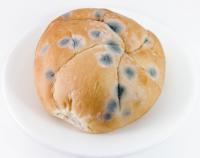
Purpose
To demonstrate that bread mold spores are present anywhere and everywhere
Additional information
Bread Mold is a simple fungus which derives its food from a variety of materials such as grains, fruits, vegetables or flesh. Mold spores are tiny and usually remain suspended in air. As soon as it finds the right environment for it to grow, the spores transform into the living fungus.
Sponsored Links
Required materials
- Piece of bread
- Re-sealable airtight plastic bag
- Dropper
- Cotton swab
- Milk carton
- Cotton swab
- Adhesive tape
- Water
- Disposable rubber hand gloves for protection
Estimated Experiment Time
Approximately 5 minutes to set up the experiment and 1-2 days to make the observations.
Step-By-Step Procedure
- 1. Collect dust from the ground on a cotton swab
- 2. Rub the soiled end on a slice of bread
- 3. Put 5 or 6 drops water on the bread slice
- 4. Put this bread slice in an airtight bag and seal it.
- 5. Place this sealed bag in an empty milk carton (preferably with milk remains in it) and seal the carton
- 6. Leave the set-up undisturbed for a day or two
Note
Ensure you wear hand gloves since Mold spores can cause allergies in some people. Wash your hands well every time you handle Bread Mold and try not to inhale the mold spores while you are handling the bread covered with the fungus.
Observation
After two days, when the sealed package is opened, the bread slice is covered with Bread Mold of various colors and textures.
Result
Spores develop into living fungus when it gets suitable conditions. The bread slice has adequate nutrition and moisture necessary for the Mold spores to germinate.
Sponsored Links
Take a moment to visit our table of Periodic Elements page where you can get an in-depth view of all the elements,
complete with the industry first side-by-side element comparisons!